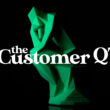CX professionals need to start by understanding their customers’ expectations for doing business with them because meeting and exceeding customer expectations is literally impossible if you don’t know what they are. There – I said it.
Customers have certain expectations when they interact with a business, such as the quality of the product or service, the level of customer service, the ease of use of the website or app, and the overall experience of doing business with the company. These expectations are shaped by various factors, including their previous experiences, feedback from others, and the company’s marketing and branding efforts.
If a business does not meet or exceed these expectations, customers are likely to have a negative experience, which can lead to a loss of business, negative reviews, and damage to the company’s reputation. On the other hand, if a business is able to meet or exceed customer expectations, it can lead to increased customer loyalty, positive reviews, and word-of-mouth referrals.
Interesting fact: Customers’ expectations rise an average of 28% per year across categories while brands’ ability to meet those expectations only improves an average of 5-7% per year.
Passikoff: Consumer Expectations are the North Star
That gap represents an enormous opportunity for brands that recognize where those gaps are and have a roadmap to bridging them.
Therefore, CX professionals must understand their customers’ expectations in order to design and implement customer experience strategies that are tailored to meet these expectations. This requires gathering customer feedback and insights through various channels, including surveys, social media, and customer support interactions, and using this information to identify areas where improvements can be made.
By focusing on meeting and exceeding customer expectations, CX professionals can help create a positive and successful customer experience that leads to increased customer loyalty, positive reviews, and ultimately, increased revenue and growth for the business.
Customers’ Brand and Product Expectations Change
Customers’ brand and product expectations can change due to a variety of factors, including changes in the marketplace, shifts in consumer preferences, advancements in technology, and the actions of competitors. Below are some key reasons why and how customers’ brand and product expectations can change:
- Changes in Marketplace: The marketplace can change rapidly due to factors such as the introduction of new products, changes in economic conditions, and shifts in consumer demographics. These changes can lead to changes in customer expectations for a particular brand or product.
- Shifting Consumer Preferences: Consumer preferences can shift over time, particularly in response to changes in lifestyle, culture, and societal values. For example, customers may be more interested in eco-friendly or sustainable products today than they were in the past.
- Advancements in Technology: Advancements in technology can also impact customer expectations for brands and products. For example, the rise of e-commerce and mobile commerce has led to changes in how customers expect to interact with and purchase products.
- Competitors’ Actions: The actions of competitors can also impact customer expectations. If a competitor introduces a new feature or product that customers find appealing, it may lead to customers raising their expectations for that feature or product from other brands.
To keep up with these changes and remain competitive, businesses must stay attuned to customer feedback and constantly adapt their products and services to meet evolving customer expectations. This requires ongoing market research, customer feedback gathering, and data analysis to identify trends and areas where improvements can be made. By staying responsive to customer needs and expectations, businesses can maintain and grow their customer base and maintain a competitive edge in the marketplace.
A Shorter Path to Improved CSAT & NPS Outcomes
Customer experience professionals can improve their Customer Satisfaction (CSAT) scores and Net Promoter Scores (NPS) by understanding their customers’ expectations and tailoring their strategies to meet these expectations. Here’s an example:
Let’s say a company operates a subscription-based online streaming service for movies and TV shows. After analyzing customer feedback and conducting surveys, the company finds that many customers are dissatisfied with the search functionality on the platform. Customers report that it is difficult to find specific titles, and the search results often return irrelevant or outdated content.
To address this issue, the company could invest in improving its search algorithm to make it more accurate and responsive. They could also consider adding filters and sorting options to help customers find the content they’re looking for more easily.
By addressing this pain point and meeting customers’ expectations for an intuitive and effective search functionality, the company may see an improvement in CSAT scores, as customers will be more satisfied with their experience on the platform. Additionally, by delivering an improved search experience, the company may increase its NPS scores, as customers are more likely to recommend the service to others.
Overall, by understanding and meeting customer expectations, customer experience professionals can improve their CSAT and NPS scores, which can lead to increased customer loyalty, positive word-of-mouth, and ultimately, business growth.
Understanding the foundational customer expectation data just got a lot easier. TheCustomer has recently partnered with market research company, Brand Keys to bring one of the largest customer sentiment datasets to market and help brands, agencies, CX professionals – anyone who is tasked with improving customer experiences – get ahead of the expectation curve. You can learn more here.
Photo by Federico Di Dio photography on Unsplash












